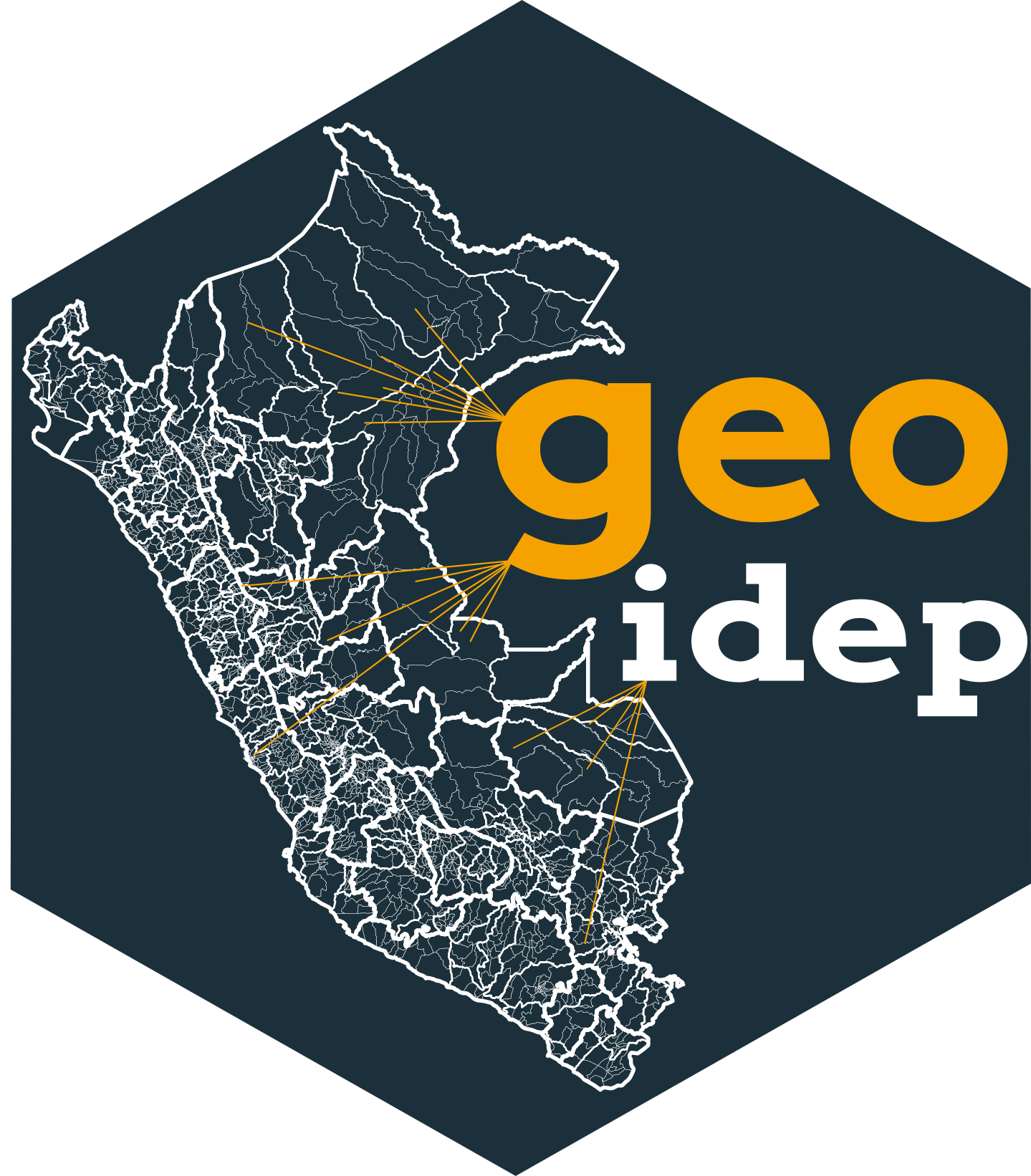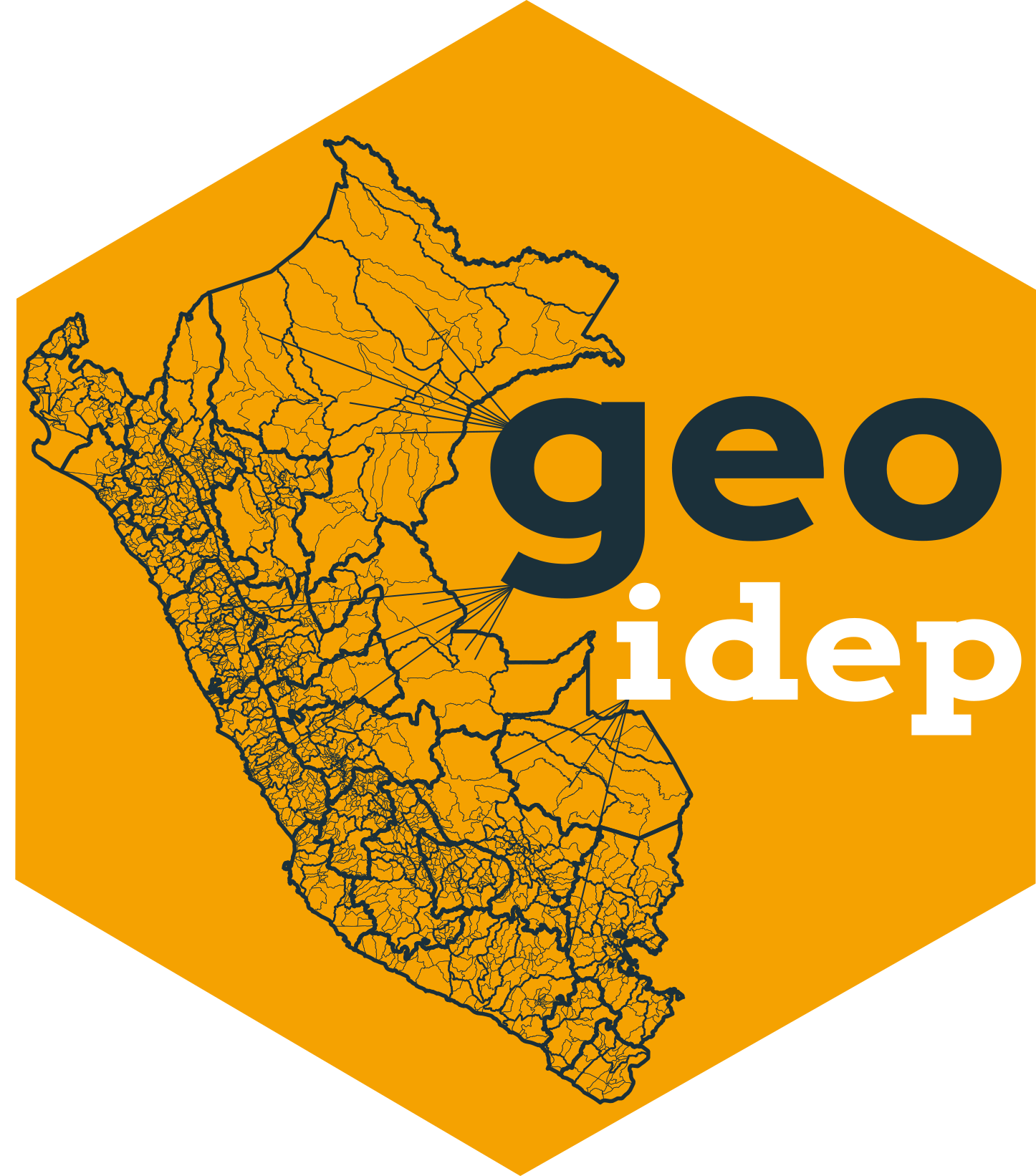


The goal of geoidep📦 is to offers R users an easy and accessible way to obtain official cartographic data on various topics, such as society🏛️, transport🚗, environment🌱, agriculture🌾, climate⛅️,among others.This includes information provided by regional government entities and technical-scientific institutions, managed by the Spatial Data Infrastructure of Peru.
⚠️ The package accesses these datasets dynamically from official public servers, without redistributing data locally.
The package is currently available in R and Python (coming soon).Installation R
You can install the development version of geoidep like so:
install.packages('pak')
pak::pkg_install('ambarja/geoidep')or also the official version available on CRAN:
install.packages('geoidep')Example 01: Introduction
── Welcome to geoidep ─────────────────────────────────────────────────────────────────
ℹ geoidep is a wrapper that enables you to download cartographic data for Peru directly from R.
ℹ Currently, `geoidep` supports data from the following providers:
• Geobosque
• INAIGEM
• INEI
• Midagri
• and more!
ℹ For more information, please use the `get_data_sources()` function.In this example, we can identify the list of providers available in geoidep and the layers they present.
get_data_sources() |>
head()
#> # A tibble: 6 × 7
#> provider category layer layer_can_be_actived admin_en year link_geoportal
#> <chr> <chr> <chr> <lgl> <chr> <chr> <chr>
#> 1 INEI General depa… TRUE Nationa… 2019 https://ide.i…
#> 2 INEI General prov… TRUE Nationa… 2019 https://ide.i…
#> 3 INEI General dist… TRUE Nationa… 2019 https://ide.i…
#> 4 Midagri Agriculture agri… TRUE Ministr… 2024 https://siea.…
#> 5 Midagri Agriculture oil_… TRUE Ministr… 2016… https://siea.…
#> 6 Geobosque Forest stoc… FALSE Ministr… 2001… https://geobo…In summary the suppliers and the number of available layers
get_providers()
#> # A tibble: 9 × 2
#> provider layer_count
#> <fct> <int>
#> 1 Geobosque 5
#> 2 INAIGEM 5
#> 3 INEI 7
#> 4 Midagri 2
#> 5 MTC 26
#> 6 Senamhi 1
#> 7 Serfor 1
#> 8 Sernanp 31
#> 9 SIGRID 4Example 02: Download official INEI administrative boundaries
This is a simple example of how to download Peru’s official administrative boundaries:
dep <- get_departaments(show_progress = FALSE)The first 10 rows of the original data are displayed here:
head(dep)
#> Simple feature collection with 6 features and 6 fields
#> Geometry type: MULTIPOLYGON
#> Dimension: XY
#> Bounding box: xmin: -79.45857 ymin: -17.28501 xmax: -70.80408 ymax: -2.986125
#> Geodetic CRS: WGS 84
#> id objectid ccdd nombdep shape_length shape_area
#> 1 1 1 01 AMAZONAS 13.059047 3.199147
#> 2 2 2 02 ANCASH 11.788249 2.954697
#> 3 3 3 03 APURIMAC 7.730154 1.765933
#> 4 4 4 04 AREQUIPA 17.459435 5.330125
#> 5 5 5 05 AYACUCHO 17.127166 3.643705
#> 6 6 6 06 CAJAMARCA 12.540288 2.688386
#> geom
#> 1 MULTIPOLYGON (((-77.81399 -...
#> 2 MULTIPOLYGON (((-77.64697 -...
#> 3 MULTIPOLYGON (((-73.74655 -...
#> 4 MULTIPOLYGON (((-71.98109 -...
#> 5 MULTIPOLYGON (((-74.34843 -...
#> 6 MULTIPOLYGON (((-78.70034 -...